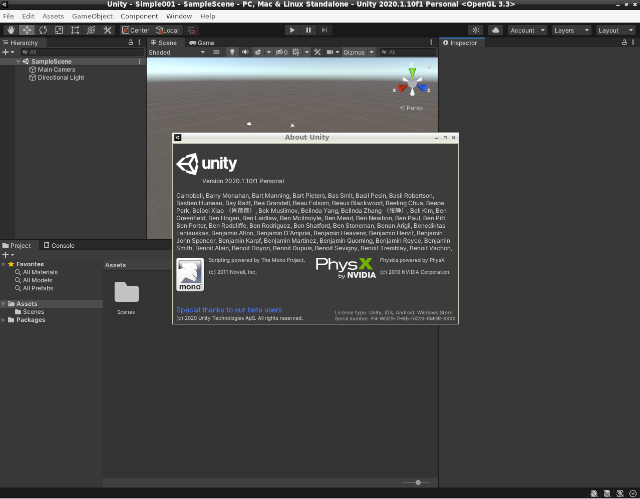The Fedora distro will be better if the development team will come with useful, accurate, and up-to-date information.
A very simple example is C and C ++ programming and more precisely how to build programs and packages.
Let's take a simple example of creating interfaces with GTK.
Let's take a simple example of creating interfaces with GTK that require knowledge of the GCC compiler.
First I install
gtk3-devel package:
dnf install gtk3-devel
The Fedora team come with a group install with many feature.
#dnf -y groupinstall "Development Tools"
I test with these examples:
#include
int main(int argc,
char *argv[])
{
GtkWidget *window;
gtk_init (&argc, &argv);
window = gtk_window_new (GTK_WINDOW_TOPLEVEL);
gtk_window_set_title (GTK_WINDOW (window), "Hello World");
gtk_widget_show (window);
gtk_main ();
return 0;
}
This create a simple window with
Hello World title.
#include
static void on_window_closed(GtkWidget * widget, gpointer data)
{
gtk_main_quit();
}
int main(int argc, char * argv[])
{
GtkWidget * window, * label;
gtk_init(&argc, &argv);
window = gtk_window_new(GTK_WINDOW_TOPLEVEL);
g_signal_connect( window, "destroy", G_CALLBACK(on_window_closed), NULL);
label = gtk_label_new("Hello, World!");
gtk_container_add(GTK_CONTAINER(window), label);
gtk_widget_show(label);
gtk_widget_show(window);
gtk_main();
return 0;
}
This is the same example but you will see a label with te text
Hello, World!.
The last example is more complex and involves the use of signals attached to the
close button and the
OK button.
The main window contains three labels with my name and an editbox in which you have to enter my nickname mythcat or something else.
#include
const char *password = "mythcat";
// close the window application
void closeApp(GtkWidget *widget, gpointer data)
{
gtk_main_quit();
}
// show text when you click on button
void button_clicked(GtkWidget *button, gpointer data)
{
const char *password_text = gtk_entry_get_text(GTK_ENTRY((GtkWidget *)data));
if(strcmp(password_text, password) == 0)
printf("Access granted for user: \"%s\"\n",password);
else
printf("Access denied!\n");
}
int main( int argc, char *argv[])
{
GtkWidget *window;
GtkWidget *label1, *label2, *label3;
GtkWidget *hbox;
GtkWidget *vbox;
GtkWidget *ok_button;
GtkWidget *password_entry;
gtk_init(&argc, &argv);
window = gtk_window_new(GTK_WINDOW_TOPLEVEL);
gtk_window_set_title(GTK_WINDOW(window), "Labels, password with one button and layout");
gtk_window_set_position(GTK_WINDOW(window), GTK_WIN_POS_CENTER);
gtk_window_set_default_size(GTK_WINDOW(window), 300, 200);
g_signal_connect(G_OBJECT(window), "destroy", G_CALLBACK(closeApp), NULL);
label1 = gtk_label_new("Catalin");
label2 = gtk_label_new("George");
label3 = gtk_label_new("Festila");
password_entry = gtk_entry_new();
gtk_entry_set_visibility(GTK_ENTRY(password_entry), FALSE);
ok_button = gtk_button_new_with_label("OK");
g_signal_connect(G_OBJECT(ok_button), "clicked", G_CALLBACK(button_clicked),password_entry);
hbox = gtk_box_new(FALSE, 1);
vbox = gtk_box_new(TRUE, 2);
gtk_box_pack_start(GTK_BOX(vbox), label1, TRUE, FALSE, 5);
gtk_box_pack_start(GTK_BOX(vbox), label2, TRUE, FALSE, 5);
gtk_box_pack_start(GTK_BOX(hbox), vbox, FALSE, TRUE, 5);
gtk_box_pack_start(GTK_BOX(hbox), label3, FALSE, FALSE, 5);
gtk_box_pack_start(GTK_BOX(vbox), ok_button, FALSE, FALSE, 5);
gtk_box_pack_start(GTK_BOX(hbox), password_entry, TRUE, FALSE, 5);
gtk_container_add(GTK_CONTAINER(window), hbox);
gtk_widget_show_all(window);
gtk_main();
return 0;
}
The result can be seen in the following image:

I put the source code for the last example in a test.c file and compiled it like this:
[mythcat@desk ~]$ gcc test.c $(pkg-config --cflags --libs gtk+-3.0) -o test
[mythcat@desk ~]$ ./test



